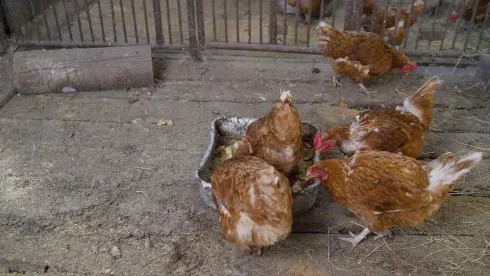-
On September 2, a coalition of consumer groups, foodborne illness survivors, poultry industry, academic scientists, and other food safety leaders sent a letter to USDA Secretary Tom Vilsack requesting a meeting to discuss the Agency’s regulatory approach to ensuring the safety of poultry. Consumer groups, the Center for Science in the Public Interest (CSPI), Consumer Federation of America, Consumer Reports, and Stop Foodborne Illness joined poultry producers, Butterball, Perdue Farms, Tyson Foods, and Wayne Farms to ask for modernized, science-based USDA poultry food safety standards that are objective, risk-based, and flexible enough to adapt to evolving science.
-
Foodborne pathogens are a significant threat to public health in the US. Salmonella and Campylobacter, which are commonly found in poultry, account for over 70% of all foodborne illnesses tracked by the CDC. Those two pathogens account for approximately 3 million illnesses in the US annually, and cost over 6 billion dollars.
-
According to the letter, reduction in foodborne illness has been at a standstill even though recognized best practices for the pathogens have advanced. In order to make progress and to achieve the Healthy People 2030 targets, the letter’s undersigned parties urged FSIS to make significant changes to its regulatory program and food safety standards, guided by the following principles and conclusions:
-
Modernized standards should be objective, risk-based, achievable, enforceable, and flexible enough to adapt to emerging evidence and the latest science.
-
A modernized Hazard Analysis and Critical Control Point (HACCP) framework should address risk reduction across the full production process from raw material to finished packaging, including defining responsibility of poultry processors to consider pre-harvest practices and interventions in their HACCP plans.
-
Salmonella and Campylobacter should be addressed in parallel but separate proceedings as larger knowledge gaps exist for Campylobacter than Salmonella and different timelines and risk mitigation approaches may be necessary.
-
Ongoing research is needed to support continued progress towards reducing Salmonella and Campylobacter, including epidemiologic data and analysis to improve attribution of illness to specific commodities and products
-
USDA Asked to Modernize Poultry Safety Standards
Wednesday, September 8, 2021
Current Public Notices
Published: 16 September, 2025
Published: 15 September, 2025
Published: 15 September, 2025
Published: 9 September, 2025
Published: 9 September, 2025
Published: 8 September, 2025
Published: 4 September, 2025
Published: 28 August, 2025
Published: 25 August, 2025
Published: 20 August, 2025
Published: 18 August, 2025
Published: 11 August, 2025
Published: 8 August, 2025
Published: 26 June, 2025



 />i
/>i

